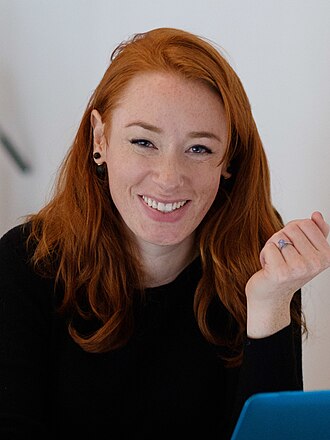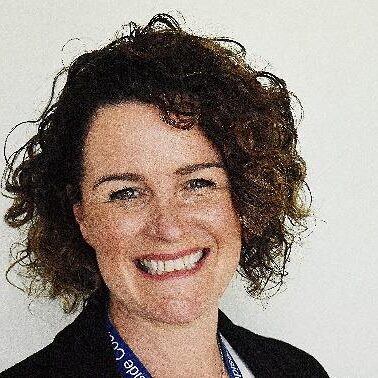Women in Maths day

To celebrate ‘Women in Maths’ day on 12th May, how can we encourage girls to believe that they can be mathematicians? Perhaps looking to some inspirational female figures is the answer.
Inspiring Girls in Maths: Heroines Who Paved the Way
It’s so important that all children – and especially girls – grow up believing that they can be brilliant at maths. For much of history, girls weren’t given the same opportunities to study or work in maths as boys. But that doesn't mean the talent wasn't there. Far from it! Many women, against the odds, achieved amazing things in maths. These stories are powerful tools for showing children, especially girls, that they too can become confident and capable mathematicians.
Why don’t we hear about many women in maths history?
Until relatively recently, girls couldn’t even go to university in many countries. For example, it wasn’t until 1948 that the University of Cambridge in the UK started giving degrees to women. Before that, even if a woman studied at a high level, she wouldn’t get the official recognition for her hard work.
Many of the women who did manage to make a name for themselves in maths had one important thing in common – a supportive family member who encouraged their learning and believed in them. Even then, they had to work incredibly hard to be taken seriously.
Meet Sofia Kovalevskaya – Mathematician, Writer, and Trailblazer
One inspiring woman we can share with children is Sofia Kovalevskaya, a Russian mathematician born in 1850. She loved maths from a young age, but at the time, Russian women weren’t allowed to travel or study freely. So, at just 18, she entered a marriage of convenience – not for love, but so she could leave the country to study maths!
She ended up learning with one of the most famous mathematicians of the time in Germany and went on to win a top maths prize in France. But Sofia wasn’t just about numbers – she also wrote plays, novels, and stood up for women’s rights. She showed that being good at maths didn’t mean you had to give up other passions. She was smart, creative, and determined – a fantastic role model for children today.
The Hidden Heroines of Maths
There are many women whose contributions to maths were hidden or overlooked. For instance, in the 18th century, women who worked as “human computers” (doing complex calculations by hand) often weren’t even credited – their work was listed under their husbands’ names!
Others, like Mary Somerville (who now features on the Scottish £10 note) and Caroline Herschel, made huge contributions to science and maths but often in the background, helping male relatives or colleagues. It’s only now that their stories are coming to light – and they can help us show our pupils that girls have always had the ability to do amazing things in maths.

Hannah Fry: A modern maths heroine
Coming right up to date, Professor Hannah Fry is a leading voice in making mathematics accessible, engaging, and relevant to everyday life. As a mathematician, author, and broadcaster, she has a unique talent for explaining complex ideas in a way that’s both entertaining and easy to understand. Her documentaries, podcasts, and regular appearances on television and radio, bring maths into the spotlight, showing how it underpins everything from love and relationships to pandemics and artificial intelligence. She also uses social media really well to help break down barriers, spark curiosity and conversation about mathematical thinking among a really broad audience. Her work not only challenges stereotypes about who mathematicians are but also inspires more young women to see maths as a creative and powerful tool for understanding the world.
Take a look at her brilliant series 'The Secret Genius of Modern Life'. The third series is currently screening and all three series are available on BBC iPlayer.
Building Confidence in the Classroom
Confidence is key in maths. Many girls (and boys!) can feel unsure of themselves, especially when they make mistakes. But maths is all about trying things out, learning from errors, and not giving up. Girls especially need to hear that making mistakes is part of learning – and that perseverance leads to success.
We can help by celebrating effort and showing real-life examples of women who kept going, even when the world told them they couldn’t.
Maths is Everywhere – Not Just in Numbers
Maths isn’t just about sums and equations. There are strong links between maths and music, art, and even storytelling. In fact, the first maths textbooks were written by artists teaching how to draw perspective!
Encouraging children to see maths in different areas of life helps them understand how exciting and creative it can be. One brilliant example is the Sublime Symmetry exhibition, which explored the beautiful patterns in the ceramic art of William De Morgan – a great way to show the maths in the arts.

Opening Doors to Future Careers
Children should leave primary school knowing that maths can lead to all sorts of exciting careers – from designing video games to planning space missions, from music production to architecture. Helping girls picture themselves in these roles can make a real difference.
Let’s make sure that in our classrooms, every girl feels like maths is for her. Let’s celebrate the women of the past and inspire the heroines of the future – because the next Sofia Kovalevskaya might just be sitting in your Year 4 class, waiting to be inspired.
Article by
Lisa Heatherington
School Improvement Advisor
Primary Maths and English
lisa.heatherington@northtyneside.gov.uk

